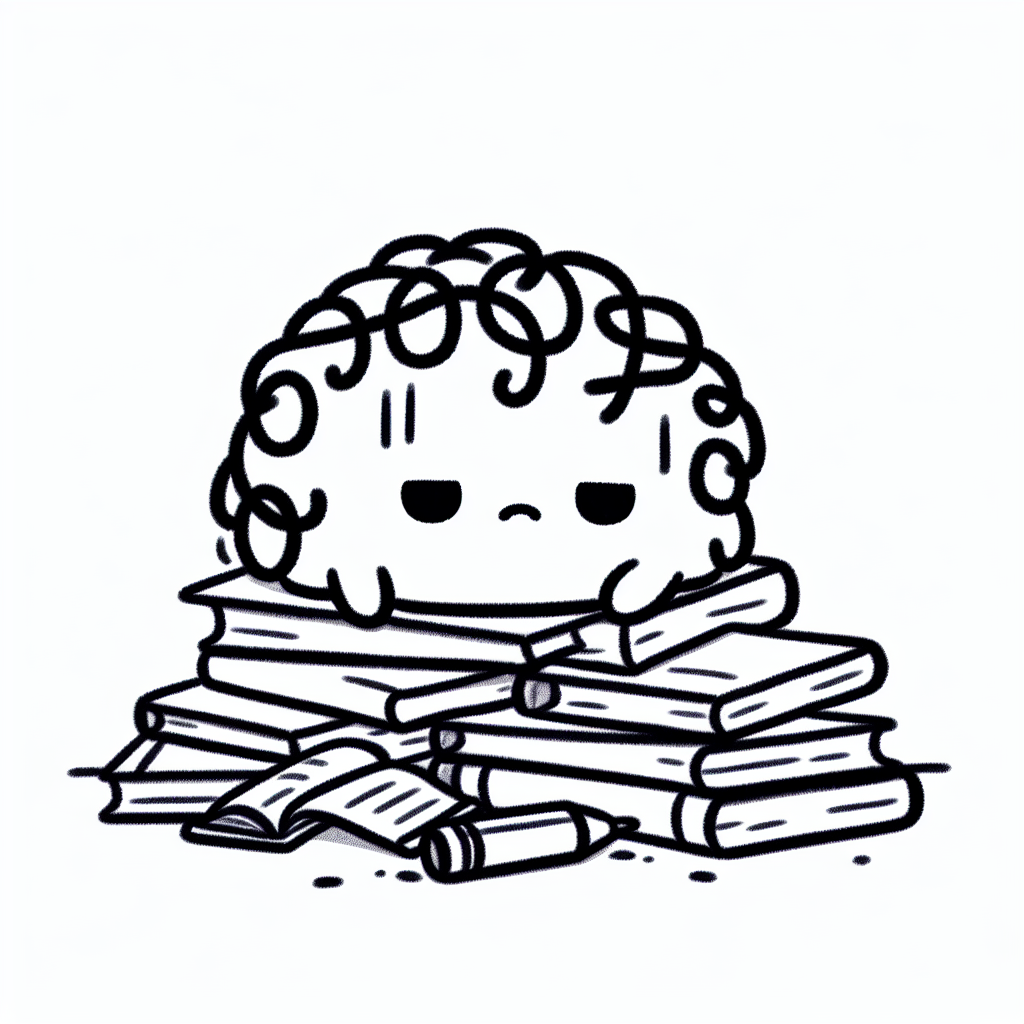What Is Academic Burnout?
Defining Academic Burnout
Academic burnout is a state of chronic physical and emotional exhaustion caused by prolonged stress related to academic responsibilities. It typically manifests as persistent fatigue, lack of motivation, and a growing sense of detachment from schoolwork. Students experiencing academic burnout often develop a cynical attitude toward their studies and feel a noticeable decline in their academic performance.
Causes of Academic Burnout
Several factors contribute to academic burnout. A primary cause is an overwhelming workload combined with unrealistic academic expectations, which can push students beyond their limits. Another significant contributor is the lack of control over academic responsibilities—when students feel they have little say in their schedules or assignments, stress levels can increase.
Poor time management and inadequate rest also play a major role. Without proper planning and downtime, students may find themselves constantly playing catch-up, leading to exhaustion. Finally, feelings of isolation and a lack of support from peers or educators can intensify burnout, making it harder to cope with academic pressures.
Understanding these causes is a key step in dealing with academic burnout effectively.

Recognizing the Symptoms of Academic Burnout
Understanding the signs of academic burnout is essential for identifying when support or intervention is needed. Burnout can manifest in emotional, physical, and behavioral ways, often developing gradually over time.
Emotional and Mental Symptoms
Students dealing with academic burnout may experience persistent feelings of frustration and irritability. A notable symptom is a lack of motivation or a growing sense of apathy toward school-related tasks (University of Georgia; Stanford University). They may feel helpless or overwhelmed, and lose interest in academic subjects they once enjoyed.
Physical Symptoms
Physical indicators of academic burnout include chronic fatigue, even after adequate rest. Students may also report sleep disturbances, frequent headaches, or gastrointestinal issues. These symptoms can impair focus and overall well-being, further affecting academic performance.
Behavioral Symptoms
Behaviorally, burnout can present as procrastination and a noticeable avoidance of academic responsibilities. Students may begin missing deadlines, skipping classes, or seeing a decline in their academic performance. These patterns often reinforce the cycle of stress and disengagement associated with burnout.

🧠 The Psychology and Science Behind Burnout
Stress Response and Burnout
Dealing with academic burnout involves understanding how chronic stress impacts the brain. Prolonged stress activates the hypothalamic-pituitary-adrenal (HPA) axis, leading to sustained release of cortisol, the body's primary stress hormone. Elevated cortisol levels over time can disrupt neurotransmitter balance, impair memory, and reduce executive function—key faculties required for academic success. This biochemical strain contributes to mental exhaustion, a hallmark of academic burnout.
Research also shows that chronic stress can shrink the prefrontal cortex, the brain region responsible for decision-making and focus, while enlarging the amygdala, which is involved in emotional responses like fear and anxiety. These changes make it harder for students to concentrate, manage time, and stay motivated, deepening the cycle of burnout.
Burnout in Other High-Stakes Professions
The phenomenon of burnout is not confined to academic settings. In high-stakes professions such as healthcare, similar psychological patterns emerge. A University of Michigan study found that over 40% of nurses in Michigan reported high levels of burnout. These findings underscore the commonality of stress-related fatigue in environments that demand sustained cognitive and emotional effort.
The parallels between academic burnout and professional burnout suggest that the underlying psychological mechanisms—such as emotional exhaustion, depersonalization, and reduced sense of accomplishment—are consistent across different stress-intensive roles. Understanding these shared dynamics can help inform more effective strategies for dealing with academic burnout.

Prevention Strategies: Building Resilience Before Burnout Hits
Effective Time Management
Dealing with academic burnout can often be mitigated by establishing strong time management habits. Creating structured daily and weekly schedules helps maintain a clear sense of direction. One effective method is using the Eisenhower Matrix to prioritize tasks by urgency and importance. Incorporating productivity tools such as Pomodoro timers, Trello boards, or Google Calendar can enhance focus and reduce last-minute stress (University of Georgia; Husson University).
Set Realistic and Achievable Goals
Preventing academic burnout also involves setting clear, attainable goals. Large assignments can be overwhelming, so breaking them down into smaller, manageable tasks is key. Celebrating small wins along the way helps maintain motivation and fosters a sense of progress (University of Georgia).
Maintain Physical Wellness
Physical health plays a critical role in dealing with academic burnout. Regular exercise supports mental health by releasing endorphins that reduce stress. Practicing good sleep hygiene and aiming for 7–9 hours of sleep per night ensures the brain is well-rested. A balanced diet provides the necessary nutrients to support both body and mind (RIT).
Incorporate Enjoyable Activities
Engaging in enjoyable activities outside academics is essential for mental rejuvenation. Make time for hobbies, creative outlets, and social interactions to maintain emotional balance. Scheduling regular breaks throughout the day helps reset cognitive energy and prevents fatigue (RIT; Husson University).
Build a Support System
A strong support system is crucial when dealing with academic burnout. Connecting with peers, mentors, and academic advisors provides emotional and academic guidance. When stress becomes overwhelming, accessing mental health resources or counseling services can offer vital support (Husson University).

🚑 Recovery Strategies: How to Heal from Burnout
Acknowledge and Accept Burnout
The first step in dealing with academic burnout is recognizing it. Signs like chronic fatigue, loss of motivation, and declining academic performance can signal that stress has become unmanageable. It's essential to understand that burnout is not a personal weakness. Avoid self-blame—burnout is a common response to prolonged academic pressure and does not reflect a lack of effort or ability.
Reevaluate Academic Priorities
Healing from burnout often requires a reassessment of academic goals. Reflect on whether your current workload aligns with your mental and physical capacity. Adjusting expectations and setting more sustainable goals can make a significant difference. In some cases, reducing your course load or even taking a temporary academic break may be necessary to restore balance and prevent long-term harm.
Practice Mindfulness and Stress-Reduction Techniques
Incorporating mindfulness and stress-reduction practices into your routine can aid significantly in recovery. Simple techniques like deep breathing exercises and mindfulness meditation help calm the nervous system. Activities such as journaling, practicing yoga, or maintaining a gratitude list can also help regulate emotions and build resilience against stress.
Use Positive Self-Talk and Cognitive Reframing
Changing how you talk to yourself is another key aspect of dealing with academic burnout. Negative internal dialogue can worsen stress and feelings of inadequacy. Replace these thoughts with affirming, compassionate messages. Practicing cognitive reframing—focusing on what you've achieved rather than what you haven't—can shift your mindset from perfectionism to progress (RIT).

🛠 Institutional and Systemic Solutions
Role of Educational Institutions
Educational institutions play a key role in dealing with academic burnout. One important step is implementing flexible academic policies and deadlines. Flexibility allows students to manage their workload more effectively, reducing pressure and enabling better mental health outcomes. For instance, policies that permit deadline extensions or reduced course loads during high-stress periods can make a significant difference.
Another critical measure is training faculty to recognize signs of student burnout. Faculty members often interact with students regularly and are well-positioned to notice changes in behavior or performance. Training equips them with the tools to identify when a student may be struggling and to offer appropriate support or referrals to campus resources.
System-Level Interventions
On a broader scale, system-level interventions are essential for addressing academic burnout across institutions. According to a study by the University of Michigan, investing in wellness infrastructure is crucial. While the study focuses on nurses, the findings are applicable to academic environments, highlighting the importance of structural support for well-being.
Institutions should offer proactive wellness programs that go beyond reactive counseling services. These can include workshops on stress management, mindfulness sessions, and peer support networks. Additionally, normalizing mental health support—through awareness campaigns and integrated services—can help reduce stigma and encourage students to seek help early. These systemic changes are vital for effectively dealing with academic burnout.

📚 Additional Resources and Tools
For students dealing with academic burnout, several universities offer valuable tools and insights to help manage stress and restore balance. These resources provide practical strategies, expert advice, and evidence-based approaches.
- University of Georgia – How to Combat Academic Burnout: This guide outlines actionable steps like setting realistic goals, prioritizing self-care, and seeking support networks to address burnout symptoms.
- Stanford University – Tackling Burnout: Stanford’s Center for Teaching and Learning provides insights on recognizing early signs of burnout and offers strategies to build resilience and maintain motivation.
- RIT – 12 Tips to Avoid Academic Burnout: Rochester Institute of Technology shares twelve practical tips, including time management techniques and the importance of regular breaks and hobbies.
- Husson University – Tips to Avoid College Burnout: This resource focuses on recognizing triggers of academic burnout and provides tips tailored to online and traditional college students.
- University of Michigan – Burnout Study: Though focused on healthcare professionals, this study highlights systemic factors contributing to burnout, many of which parallel student experiences in rigorous academic environments.
Exploring these tools can help individuals develop effective coping mechanisms and long-term strategies for dealing with academic burnout.

Final Thoughts: Thriving Academically Without Burning Out
Dealing with academic burnout is a real concern for many students, but it's important to recognize that burnout is not an inevitable part of academic life. While the pressures of coursework, deadlines, and performance expectations are significant, they can be managed with the right strategies and mindset.
Proactively developing healthy habits plays a critical role in preventing academic burnout. This includes setting realistic goals, maintaining a consistent sleep schedule, and incorporating regular breaks and physical activity into your routine. Self-awareness is equally important—knowing when you're reaching your limits allows for timely adjustments before stress becomes overwhelming.
Institutional support also matters. Universities and colleges that offer accessible mental health services, flexible academic policies, and supportive faculty environments help students maintain well-being alongside academic achievement.
Ultimately, thriving academically requires a holistic approach. Mental, physical, emotional, and academic health should not be treated separately; nurturing all aspects together supports long-term success and sustainability in education.














